▼ Delicate mosses could be bio indicators of pollution! [08-28-17]
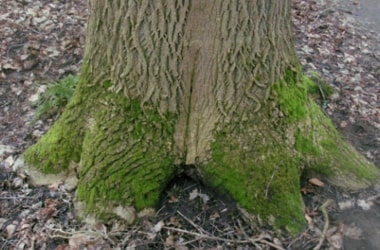 Delicate mosses found on rocks and trees in cities around the world can be used to measure the impact of atmospheric change. Delicate mosses found on rocks and trees in cities around the world can be used to measure the impact of atmospheric change.
These could prove a low-cost way to monitor urban pollution, according to Japanese scientists.
The “bioindicator” responds to pollution or drought-stress by changing shape, density or disappearing, allowing scientists to calculate atmospheric alterations.
This method is very cost effective and important for getting information about atmospheric conditions.
Mosses are a common plant in all cities so we can use this method in many countries…. they have a big potential to be bioindicators with nearly 50 types of moss analysed for the study.
The humid cities where moss thrives could benefit most from using bryophytes–a collective term for mosses, hornworts and liverworts–as bioindicators, adding moss could be monitored in its natural environment or cultivated for analysis.
The Study
- Researchers tested the effect of nitrogen pollution, air quality and drought-stress on moss found over a 3km square (1.9 mile) area in Hachioji City in northwestern Tokyo.
- The study showed severe drought-stress tended to occur in areas with high levels of nitrogen pollution, which it said raised concerns over the impact on health and biodiversity.
- However, the scientists could not effectively measure air purity which affects the number of moss types as pollution levels in the sample area were not high enough.
- If the air pollution is severe, the purity is also evaluated by moss … the change of the moss is very diverse according to the environmental problem.
- Bioindicators such as mosses - which generally absorb water and nutrients from their immediate environments - were often cheaper to use than other methods of environmental evaluation, and can also reflect changes to ecosystems, said the scientists.
|
▼ MNRE issues solar power project guidelines [08-28-17]
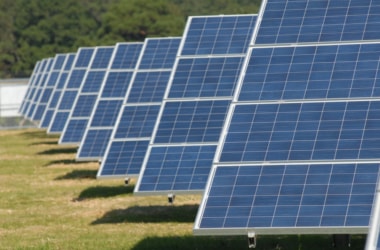 Ministry of New & Renewable Energy (MNRE) has issued the Guidelines for Tariff Based Competitive Bidding Process for Procurement of Power from Grid Connected Solar PV Power Projects. Ministry of New & Renewable Energy (MNRE) has issued the Guidelines for Tariff Based Competitive Bidding Process for Procurement of Power from Grid Connected Solar PV Power Projects.
The Government has notified these Guidelines on 3rd August, 2017.
These Guidelines have been issued under the provisions of Section 63 of the Electricity Act, 2003 for long term procurement of electricity by the ‘Procurers’ [the distribution licensees, or the Authorized Representative(s), or an Intermediary Procurer] from grid-connected Solar PV Power Projects (‘Projects’), having size of 5 MW and above, through competitive bidding.
Key Reform Initiatives as per these Guidelines are as follows:
i. Generation Compensation for off take constraints thereby reducing off take risks: The “Must-run” status for solar projects has been stressed upon.
Generation Compensation provided for following off-take constraints:
a) Back-down - Min. Compensation 50% of PPA Tariff
b)Grid unavailability - Compensation by way of Procurement of Excess Generation / Outright Compensation
ii. PPA: To ensure lower tariffs, Minimum PPA tenure has been kept at 25 years. Unilateral termination or amendment of PPA is not allowed.
iii. Project preparedness to expedite and facilitate setting up of projects: Issues related to land, connectivity, clearances etc. and the extension in case of delay, have been streamlined.
iv. Event of Default and the consequences thereof clearly defined to ensure optimal risk sharing between Developer and Procurer. This has been done by clearly defining the generator and procurer events of default, and describing the consequences thereof.
v.Termination Compensation to increase bankability of projects by securing the investment by the Generator and the lenders against any arbitrary termination of PPA. Quantum and modality for termination compensation in case of both generator default and procurer default has been clearly defined.
vi. Payment Security Mechanism: Risk of generator’s revenue getting blocked due to delayed payment / non- payment by the procurers has been addressed through provision of Payment Security Mechanism through instruments like Letter of Credit (LC), Payment Security Fund, State Guarantee, etc.
vii. Change in Law provision to provide clarity and certainty to generators, procurers, and investors/lenders - Change in Law provision, effective from the date of bid submission and covering any change in law/Tax rate which has a direct effect on the Project (and not just taxes made applicable for supply of power) has been provided.
viii. Early Commissioning & Part-Commissioning for expeditious completion of projects - Early commissioning and part commissioning have not only been allowed, but incentivised, by way of allowing the PPA for a minimum 25 years from the Scheduled Commissioning Date.
ix. Rationalisation of Penalties: The penalties have been rationalised, so as to reduce the overall cost to the Generator, while at the same time, ensuring compliance with the Commissioning Schedule/Scheme Guidelines
x. Re powering: Generators are free to re power their power plants. However, the procurer will be obliged to buy power only within the CUF range in PPA.
xi. Bid structure and process: Bids have been allowed in both Power (MW) and Energy (kWh) terms. Also, e-bidding has been emphasised to improve transparency.
|
▼ Meet a pig nosed frog! [08-23-17]
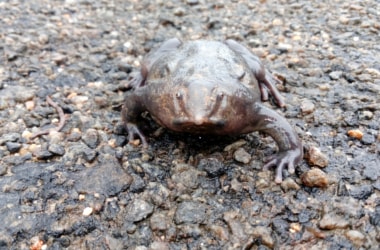 According to a paper published last month in Alytes, a scientific journal devoted to the study of frogs and amphibians, Indian scientists have discovered a new species of frog that has a snout-shaped nose. According to a paper published last month in Alytes, a scientific journal devoted to the study of frogs and amphibians, Indian scientists have discovered a new species of frog that has a snout-shaped nose.
This is just like a pig’s, evoking comparisons with the Purple frog that took the world by storm when it was first discovered in 2003.
The soiled-dwelling species, discovered by scientists from the Centre for Cellular and Molecular Biology (CCMB) in Hyderabad, has been named after the Indian herpetologist S. Bhupathy.
Bhupathy’s purple frog inhabits the eastern slopes of the Western Ghats, near the Srivilliputhur Grizzled Giant Squirrel Wildlife Sanctuary in Tamil Nadu.
The discovery is significant as it constitutes additional evidence in favour of the theory of continental drift.
The Purple frog is an inhabitant of Seychelles, and the discovery of Bhupathy’s purple frog in India suggests that the Indian subcontinent was part of the ancient landmass of Gondwana.
This was before splitting from Seychelles 65 million years ago.
Apart from N. bhupathi, Alytes also describes the discovery of two new frog species from north-eastern India: Xenophrys sanu, a resident of the Darjeeling hills in West Bengal, and Xenophrys katabhako, found in West Bengal and Sikkim.
|
▼ Two new primitive species of Earthworms discovered [08-21-17]
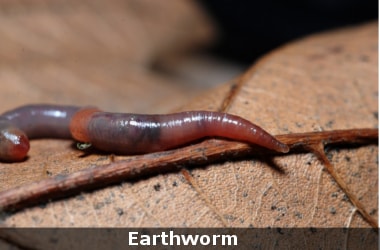 Two new primitive species of earthworms have been discovered in the Western Ghats. Two new primitive species of earthworms have been discovered in the Western Ghats.
Researchers at Mahatma Gandhi University in Kerala and Shoolini University in Himachal Pradesh named the new earthworm species Drawida polydiverticulata and Drawida thomasi.
For Drawida polydiverticulata, its multiple lobes, also called diverticulums (an organ located in the front of its body) are unique amongst the members of the genus.
This species was found to be widespread in the protected shola grasslands of the Munnar region.
This is including Eravikulam National Park, Pampadun Shola National Park and Chinnar Wildlife Sanctuary.
The second new earthworm, Drawida thomasi, was collected at the Kozhippara Waterfalls near Kakkadampoyil, at the border between Malappuram and Kozhikode.
Along with the new species belonging to the primitive family Moniligastridae, the scientists also report the occurrence of five species.
These are of the same genus that have not previously been recorded from the state.
To date, there are 73 species of the genus Drawida confirmed to be living in the Indian subcontinent.
However, the greatest concentration (43 species) is found in the Western Ghats.
The genus has an important centre of speciation in Kerala.
The present discovery of two new species and five new local records further contributes to the vast species richness of the genus in the state.
At present, there are about 200 species known in the genus Drawida.
Their habitats are spread across India throughout the Indo-China region to southeastern Asia and up to the north in Japan.
|
▼ Green Diwali Pledge - Harit Diwali, Swasth Diwali [08-18-17]
 Union Minister for Environment, Forest and Climate Change, Dr. Harsh Vardhan, launched the “Harit Diwali, Swasth Diwali” campaign. Union Minister for Environment, Forest and Climate Change, Dr. Harsh Vardhan, launched the “Harit Diwali, Swasth Diwali” campaign.
Later, Dr. Harsh Vardhan also administered a Pledge for a Green and Healthy Diwali to the gathering of students.
The Pledge will be widely circulated to the schools/colleges and other educational institutions.
The school administration will be requested to administer the said Pledge during their school assembly up to Diwali.
Students presented ‘Nukkad Nataks’ (street plays) and also sang “Prakriti Vandana” on the occasion.
As a part of the campaign, the Environment Ministry will undertake various activities to create awareness among various stakeholders and encourage people to participate in combating air pollution.
Green Diwali: Know More
- Some of the activities to promote Green Diwali among school children include stickers/logo distribution, poster competition, advertisement on public transport systems, public appeal using Radio/FM, involving industry associations and other stakeholders.
- As a part of the social media campaign, an online competition will be conducted, where any individual/organisation can make a video/audio clip on the theme ‘Pollution Free Diwali’.
- The best of these clips will be used officially to promote the theme across the country.
|
▼ Fossil remains of Xibalbaonyx oviceps, a prehistoric giant sloth, found [08-18-17]
 Mexican scientists have discovered the fossilised remains of a previously unknown species of giant sloth that lived 10,000 years ago. Mexican scientists have discovered the fossilised remains of a previously unknown species of giant sloth that lived 10,000 years ago.
This sloth was found at the bottom of a sinkhole.
The Pleistocene-era remains were found in 2010, but were so deep inside the water-filled sinkhole that researchers were only gradually able to piece together what they were.
The skeleton is nearly complete, leading scientists to believe the sloth fell into the sinkhole when it was dry or had only a little water at the bottom.
They have named the new species Xibalbaonyx oviceps.
An initial analysis suggests the sloth lived between 10,647 and 10,305 years ago.
This marks an era when giant creatures of all kinds roamed the earth.
|
▼ Largest volcanic region on earth under Antarctica [08-16-17]
 The largest volcanic region on Earth - with over 100 volcanoes - has been discovered two km below the surface of the vast ice sheet in west Antarctica. The largest volcanic region on Earth - with over 100 volcanoes - has been discovered two km below the surface of the vast ice sheet in west Antarctica.
Researchers from the University of Edinburgh in Britain found a staggering 91 previously unknown volcanoes.
This is adding to the 47 others that had been discovered over the previous century of exploring the region.
The height of these newly discovered volcanoes range from 100 to 3,850 metres, with the highest almost as tall as Switzerland’s 3,970-metre Eiger mountain.
These active peaks are concentrated in a region known as the west Antarctic rift system — which stretches 3,500 km from Antarctica’s Ross ice shelf to the Antarctic peninsula.
Geologists say this huge region is likely to dwarf east Africa’s volcanic ridge - currently rated as the densest concentration of volcanoes in the world.
If one of these volcanoes were to erupt it could further destabilise west Antarctica’s ice sheets.
Anything that causes the melting of ice, which an eruption certainly would, is likely to speed up the flow of ice into the sea.
The Edinburgh volcano survey, reported in the Geological Society’s special publications series, involved studying the underside of the west Antarctica ice sheet for hidden peaks of basalt rock similar to those produced by the region’s other volcanoes.
The biggest question that needs to be resolved is whether these volcanoes are active.
|
▼ 53 species of medicinal plants under threatened list by BSI [08-14-17]
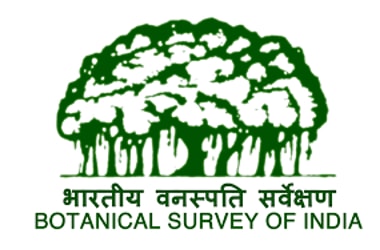 The Government has taken note of the survey by Botanical Survey of India (BSI) that out of 8,000 medicinal plants. The Government has taken note of the survey by Botanical Survey of India (BSI) that out of 8,000 medicinal plants.
This is following 53 species are under threatened categories like Critically Endangered, Endangered and Vulnerable.
For conservation and development of medicinal plants in the country, presently the NMPB is implementing Central Sector Scheme for Conservation, Development and Sustainable Management of Medicinal Plants.
The Scheme is aimed at providing project based support for survey, inventorization, in-situ conservation through development of Medicinal Plants Conservation and Development Areas (MPCDAs).
Apart from this, there was ex-situ conservation through establishment of herbal gardens, linkage with Joint Forest Management Committees (JFMCs) / Panchayats / Biodiversity Management Committee (BMC) for value addition activities like drying, grading, storage, primary processing and Research & Development etc.
Under the above activities specific focus is given for conservation and development of threatened category of medicinal plants.
For promoting the cultivation of natural herbs and medicinal plants in the country, presently, the Ministry of AYUSH, Government of India is implementing a Centrally Sponsored Scheme of National AYUSH Mission (NAM).
Under the NAM Scheme, there is a component on ‘Medicinal Plants.’
This is primarily aimed at supporting cultivation of natural herbs and medicinal plants on farmer’s land with backward linkages through establishment of nurseries for supply of quality planting material, and forward linkages for post-harvest management.
The cultivation programme is being implemented through the identified implementing agency of concerned state (generally State Agriculture / Horticulture Departments) and the financial assistance is provided as per the State Annual Action Plan approved for concerned State.
The financial assistance is provided in the form of subsidy @ 30%, 50% and 75% of cost of cultivation of medicinal plants.
Funds released under Centrally Sponsored Scheme of “National Mission of Medicinal Plants” and for component of Medicinal Plants under Centrally Sponsored Scheme of National AYUSH Mission (NAM) during last three years i.e. 2014-15, 2015-16 and 2016-17 is INR 4566.93 lakhs, 2779.8238 lakhs and 4287.097 lakhs respectively.
|
▼ Ban on use of non-biodegradable plastic less than 50 micron in Delhi [08-11-17]
 The National Green Tribunal (NGT) on 10th Aug 2017 imposed an interim ban on use of non-biodegradable plastic bags which are less than 50 microns in the entire national capital. The National Green Tribunal (NGT) on 10th Aug 2017 imposed an interim ban on use of non-biodegradable plastic bags which are less than 50 microns in the entire national capital.
A bench headed by NGT Chairperson Justice Swatanter Kumar also announced an environment compensation of INR 5,000 on anyone found in possession of such banned plastic.
The tribunal has also directed the Delhi government to seize the entire stock of plastic within one week from the day of the law's passage.
The bench asked the AAP-ruled city government and the Delhi Pollution Control Committee to file an affidavit by a senior most officer and inform it how directions with regard to waste management in the city were being implemented particularly in respect to plastics.
The green panel had last year banned the use of disposable plastic in Delhi and NCR with effect from January 1, 2017 and directed the city government to take steps to reduce dumped waste.
The Tribunal had on July 31, slammed the Delhi government over indiscriminate and rampant use of plastic in the national capital despite its prohibition.
The bench had directed the city government to strictly enforce its ban order in the city and sought a status report on the issue.
The NGT had prohibited the use of disposable plastic in the entire city, especially at hotels, restaurants and for public and private functions.
It asked the Delhi government to take appropriate steps against “storage, sale and use” of such material from January 1 this year.
It had also said that an environment compensation of INR 10,000 would be imposed on vegetable vendors and slaughter houses for throwing garbage in public places.
|
▼ Karakoram range glaciers grow despite global warming [08-9-17]
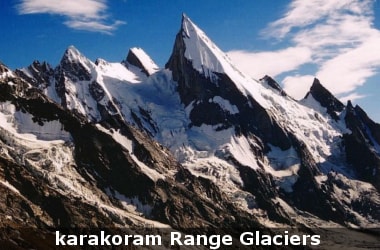 A summer ‘vortex’ of cold air over the Karakoram, a large mountain range spanning the borders of India, Pakistan and China, is causing the glaciers in the region to grow in spite of global warming. A summer ‘vortex’ of cold air over the Karakoram, a large mountain range spanning the borders of India, Pakistan and China, is causing the glaciers in the region to grow in spite of global warming.
Researchers have identified a large scale circulation system - or vortex - centred over the Karakoram mountain range.
In winter, the vortex affects the temperature over the whole 2,000 kilometre mountain range, but in the summer the vortex contracts and has an effect only over the Karakoram and western Pamir, a mountain range in Central Asia.
This induces an anomalous cooling in summer, which is different to the warming seen over the rest of the Himalayas, researchers said.
This Karakoram vortex goes some way to explaining why the glaciers in this region are behaving differently to those in most other parts of the world, they said.
Most climate models suggest warming over the whole region in summer as well as in winter.
However, this study has shown that large-scale circulation is controlling regional variability in atmospheric temperatures, with recent cooling of summer temperatures.
This suggests that climate models do not reproduce this feature well.
Researchers said that it is not known whether climate change will affect this circulation system and what the effect of sudden shifts might be.
However, the circulation system is currently providing a dampening effect on global warming, reducing glacial melt in the Karakoram region and any change will have a significant effect on ice melt rates.
This would ultimately affect river flows in the region, they said.
Usually, glaciers oscillate between growth and retreat.
Snow falls on the peaks and gradually compacts and turns to ice while lower down the glaciers lose ice to melting and evaporation.
If snowfall equals snow-melt, the glacier is in equilibrium but global warming has tipped the balance so that most of the world’s glaciers are shrinking.
Acting like a counter-weighted temperature control, the unique summer interaction of the Karakoram vortex and the South Asian Monsoon causes temperatures in the Karakoram and Pamir to cool while those in the Central and Eastern Himalaya are warming, and vice versa.
Over recent decades, these vortex-monsoon interactions have resulted in stormier conditions over the Karakoram.
This vortex provides an important temperature control.
|
▼ NAP, GIM launched to implement tree plantation [08-9-17]
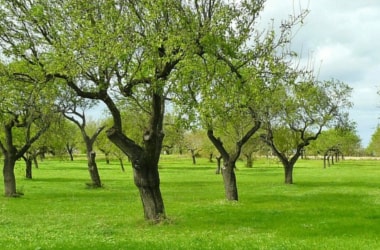 To achieve the targets mentioned in the National Forest Policy to maintain 33% forest and tree cover in the country the Ministry of Environment, Forest & Climate Change (MoEF&CC) is implementing two major afforestation/tree plantation schemes. To achieve the targets mentioned in the National Forest Policy to maintain 33% forest and tree cover in the country the Ministry of Environment, Forest & Climate Change (MoEF&CC) is implementing two major afforestation/tree plantation schemes.
These include National Afforestation Programme (NAP) scheme and National Mission for a Green India (GIM).
While NAP is being implemented for afforestation of degraded forest lands, GIM aims at improving the quality of forest/increase in forest cover.
GIM also covers cross - sectoral activities on landscape basis.
An area of about 21 lakh ha has been approved for new afforestation with an investment of around INR 3700 crore under NAP since inception in 2000, till 2016-17.
Under GIM an amount of INR 174 crore has been released since 2011-12 to 2016-17 for preparatory and perspective plan.
The fund under Compensatory Afforestation Fund Management and Planning Authority (CAMPA), interalia, is also used in plantation activity including compensatory afforestation to give a massive thrust to afforestation activity in the country.
An area of 1.46 lakh ha. under Item 51(a) and 9460.49 lakh seedlings to be planted under 51(b) have been fixed as total targets for the year 2017-18.
Tree Plantation/afforestation activities are taken up cross-sectorally by various departments, NGOs, civil society, corporate etc. under various Centrally Sponsored Schemes and also under different State Plan/Non Plan Schemes including externally aided projects involving large - scale participation of people and other social organizations.”
|
▼ South Asia could see catastrophic heat levels by 2100 [08-3-17]
 South Asia, home to one-fifth of the world’s population, could see humid heat rise beyond survivable levels by century’s end if nothing is done to halt global warming, researchers said on August 2, 2017. South Asia, home to one-fifth of the world’s population, could see humid heat rise beyond survivable levels by century’s end if nothing is done to halt global warming, researchers said on August 2, 2017.
The study in the journal Science Advances warned of “summer heat waves with levels of heat and humidity that exceed what humans can survive without protection”.
The research is based on two climate models. One is a “business-as-usual” scenario in which little is done to contain climate change.
The second is aimed at limiting temperature rise to well below 2°C, as pledged by more than 190 nations under the 2015 Paris climate accord.
The study is the first of its kind to look not just at temperatures, but at the forecast of “wet-bulb temperature”, which combines temperature, humidity and the human body’s ability to cool down in response.
The survivability threshold is considered to be 35°C, or 95°F.
Under a business-as-usual scenario, “wet-bulb temperatures are projected to approach the survivability threshold over most of South Asia, and exceed it at a few locations, by the end of the century,” said the report.
About 30% of the population in the region would be exposed to these harmful temperatures, up from 0% at present, said the report.
The densely populated farming regions of South Asia could fare the worst, because workers are exposed to heat with little opportunity for escape into air-conditioned environments.
Deadly heat waves could begin within as little as a few decades to strike regions of India, Pakistan, and Bangladesh, including the fertile Indus and Ganges river basins that produce much of the region’s food supply, as per the report.
In 2015, the fifth deadliest heat wave in modern history swept over large parts of India and Pakistan, killing some 3,500 people.
But researchers said their models gave cause for hope, too.
Under the scenario in which steps are taken to limit warming over the coming decades, the population exposed to harmful wet-bulb temperatures would increase from 0% to just 2%.
Temperatures would still reach dangerous levels (over 31°C), but would not be quite so close to the fatal threshold.
South Asia: Know More
- South Asia or Southern Asia is a term used to represent the southern region of the Asian continent, which comprises the sub-Himalayan SAARC countries and, for some authorities, adjoining countries to the west and east.
- Population: 1.749 billion (2013)
- GDP (Nominal): $2.9 trillion
|
▼ 5 heavy metals in firecrackers banned to curb air pollution [08-2-17]
 The Supreme Court has imposed ban on use of five harmful heavy metals like lithium, antimony, mercury, arsenic and lead in the manufacturing of firecrackers as they cause air pollution. The Supreme Court has imposed ban on use of five harmful heavy metals like lithium, antimony, mercury, arsenic and lead in the manufacturing of firecrackers as they cause air pollution.
The SC order came on a 2015 petition filed by three Delhi children who had requested the apex court to intervene to regulate the use of crackers and fireworks during festivals like Diwali.
The apex court held that it is the responsibility of the Petroleum and Explosives Safety Organisation (PESO) to ensure compliance of ban order particularly in Sivakasi in Tamil Nadu where there are large number of firecracker manufacturers.
It also asked CPCB (Central Pollution Control Board) and PESO to make collaborative efforts for setting up of standards with regard to air pollution caused by the bursting of fire-crackers.
Heavy metals in firecrackers Lithium is a metal used to impart red colour to fireworks. Antimony is used to create glitter effects.
Lead oxide provides a special crackling effect which, if inhaled, in high concentration can cause damage to the nervous system.
PESO: Know More
- PESO is the apex department to control and administer manufacture, storage, transport and handling of explosives, petroleum, compressed gases and other hazardous substances in India.
- It functions under the Department of Industrial Policy and Promotion (DIPP), Ministry of Commerce and Industry.
- It is headed by Chief Controller of Explosives and is headquartered at Nagpur, Maharashtra.
|
▼ Bihar, UP sites of 7 NMCG projects [08-1-17]
 The Executive Committee of National Mission for Clean Ganga (NMCG) in its 4th meeting has approved seven projects in the sector of sewage infrastructure, ghat development and research. The Executive Committee of National Mission for Clean Ganga (NMCG) in its 4th meeting has approved seven projects in the sector of sewage infrastructure, ghat development and research.
Three projects each were approved in sewage sector in Uttar Pradesh and Bihar.
Central Government will provide operation and maintenance cost for 15 years to all these six projects along with 100% central assistance
Besides, a research study to understand the non-putrefying properties of river Ganga in both water and sediment was also approved.
The study will be an extension of a research carried out by National Environment Engineering Research Institute (NEERI) to identify the special properties of river’s waters.
About National Mission for Clean Ganga (NMCG)
- NMCG is the implementation wing of National Council for Rejuvenation, Protection and Management of River Ganga (referred as National Ganga Council).
- It was established in 2011 as a registered society under Societies Registration Act, 1860.
- It has a two tier management structure and comprises of Governing Council and Executive Committee. Both of them are headed by Director General (DG), NMCG.
- Executive Committee is authorized to approve projects under mission up to INR 1000 crore. Similar to structure at national level, State Programme Management Groups (SPMGs) acts as implementing arm of State Ganga Committees.
- This structure attempts to bring all stakeholders on one platform to take a holistic approach towards the task of Ganga cleaning and rejuvenation.
- In October 2016, National Ganga Council has replaced National Ganga River Basin Authority(NGRBA) which was constituted under the provisions of the Environment (Protection) Act (EPA), 1986.
|